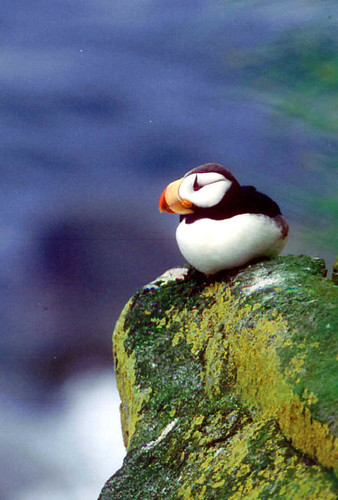
Horned Puffin, Fratercula corniculata,
on St. Paul Island in the Pribilofs, Alaska.
Photo courtesy of Paul West © - all rights reserved.Birds in Science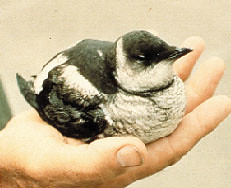
The effects of overfishing may have driven marbled murrelets,
Brachyramphus marmoratus (pictured, left), an endangered seabird found along the Pacific coast of the United States, to increasingly rely upon
less nutritious food sources, according to a new study by biologists at the University of California, Berkeley. The results, to be published online by early March 2006 in the peer-reviewed journal
Conservation Biology, suggest that feeding further down the food web may have played a role in low levels of reproduction observed in contemporary murrelet populations, and has likely contributed to the seabirds' listing as an endangered species, the researchers said. "The dietary patterns of today's marbled murrelets might be artifacts of the profound changes that coastal marine ecosystems world-wide have undergone because of overfishing," said Steve Beissinger, professor of conservation biology in UC Berkeley's Department of Environmental Science, Policy, and Management and principal investigator of the study. "So little is known about the diet of the murrelet that a study like this is important in informing fishery management decisions." GrrlScientist note:
the effects of overfishing on seabirds has been published by three different research groups within recent months and, even though they all used different methologies, they all came to the same conclusions. Don't you find this troubling?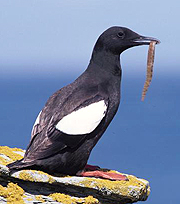
Every summer for three decades, ornithologist George Divoky, a 59-year-old Seattle resident who works for the University of Alaska's Institute for Arctic Biology, has migrated to Cooper Island, a pile of pebbles in the Arctic Ocean 25 miles from Barrow. The grizzled scientist arrives each June, hauling three months' worth of supplies, to record the lives of birds called black guillemots,
Cepphus grylle (pictured), elegant seabirds that nest on the ground under decaying wooden ordnance boxes. Guillemots don't begin nesting until the snow melts and the ground is exposed. The first eggs are laid roughly two weeks later. But one day, Divoky
noticed a strange pattern: in the mid-1990s, the first egg was being laid 10 days earlier than in 1975. Basically, the Arctic summer was arriving earlier. "It happened so slowly, it took a long time to see," Divoky said. The guillemot colony once hovered at 200 pairs. But as the sea ice moved farther offshore each year, it drew away the cod that the guillemots eat. As temperatures increased, horned puffins,
Fratercula corniculata (pictured at top), which formerly stayed in the warmer Bering Sea, began moving in and killing the guillemots to take over their nests. "Now you've got a sub-Arctic species [puffins] driving out an Arctic species [guillemots] in the middle of the Arctic," Divoky observed. He suspects warming will ultimately drive off all the guillemots, leaving Cooper Island for puffins. GrrlScientist says:
in addition to the drama of the study itself, this is a fascinating and well-written story that describes some of the rigors that are a normal part of many scientists' professional lives. Birds are breaking records by
living longer and travelling further, according to a report from leading ornithologists. The British Trust for Ornithology (BTO) said a worldwide study had added years to the known age of several species after metal bands, or rings, were fitted to their legs to help trace their movements. "Producing the ringing report is always exciting - but to break so many records in one year is tremendous. Unlike humans, birds don't spend a long time going through middle and old age. After maturing, they remain in good shape for most of the rest of their lives," said Jacquie Clark, who heads the BTO's ringing scheme. "Once they fall below par physically they tend not to last long. They might lose that essential bit of speed necessary to escape predators, face increasing difficulty completing long migrations or struggle to survive through winters." It was also noted that volunteers caught and ringed
more birds in 2004 than in any other year since tagging started in Britain in 1909.
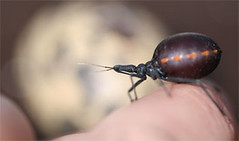
For birds, getting hauled out of a nest by a scientist and poked with a needle -- an increasingly common occurrence in this season of bird flu -- is very stressful. Some German ornithologists who study terns, gull-like seabirds, worried that such unpleasant encounters were biasing their research results. So taking a cue from nature, they put a
tropical blood-sucking bug,
Dipetalogaster maximus (pictured, right), on the job to do their work for them. "I had used the bugs to bleed captive bats," says Christian Voigt of the Institute for Zoo and Wildlife Research in Berlin. He describes the technique in the online journal, the German Journal of Ornithology (E-pub, vol. 147, 2006). Basically, to adapt the method for wild terns, he and his colleagues put insect's larvae into hollow artificial eggs with an oval opening. Netting over the hole kept the insect from escaping. After temporarily replacing the real clutch with these artificial eggs containing blood-sucking larvae, the researchers were able to collect 78 blood samples from 59 individual birds (the real eggs were then returned, unharmed). Initial analyses of the blood, which have not been published yet, further validate the research, says Voigt: "Our findings indicate that the bugged birds have indeed reduced levels of stress hormone compared to birds that were caught and bled with traditional methods." GrrlScientist note:
even though I rarely had trouble getting blood from much smaller bird species than terns, I do think this is a clever way to obtain blood samples for stress hormone assays without causing a stress-induced increase in their titres.
The
Center for Biodiversity and Conservation (CBC) at the
American Museum of Natural History invites you to attend its
eleventh annual symposium,
Conserving Birds in Human-Dominated Landscapes: Weaving a Common Future, in New York City this 27 and 28 of April. This symposium focuses on diverse avian responses to broad-scale human activities in urban centers, agricultural areas, coastal communities, and working forests -- the wide array of landscapes that we call home. Within these human-dominated systems, shifts have been documented in bird abundance, distribution, behavior, life histories and, ultimately, evolutionary potential. The CBC's 2006 conference will present unique challenges to, and key opportunities for, invigorating bird diversity in the areas most heavily impacted by human activities.
Christmas Bird Count News
Will "winter finches" or northern raptors spread across North America this December? Will snow and ice blanket this continent, or will mild conditions prevail until the New Year? Will observers along the storm-ravaged Gulf Coast be able to discover the effects of this summer's hurricanes on their local birds? More than 50,000 observers in hundreds of locations throughout the United States and Canada, the Caribbean, parts of South and Central America, Bermuda, the West Indies and even a few Pacific Islands will be outside counting birds to find out. The
Christmas Bird Count, also known as the CBC, now under the supervision of the
National Audubon Society, began 106 years ago when ornithologist Frank Chapman and 26 fellow bird enthusiasts replaced the traditional Christmas Day bird hunt with a day of bird observation. The annual Christmas Bird Count starts on 14 December and extends through 5 January in any given year. Each official CBC location consists of a 15 mile-diameter circle. Observers start out before dawn, listening for owl calls, then drive and walk through woods, fields, wetlands and along lakes and streams from dawn to dusk, noting not only how many different species they can find, but the numbers of each species. Participants are not paid for the count. In fact, they each contribute a $5 fee to cover the cost of printing official lists, preparing other materials and publishing the results. For more information, click each link to view;
this year's CBC results and last year's (105th CBC)
photo gallery. You can also start off the new year by
joining the National Audubon Society (always a great gift idea for that person on your list who has everything).
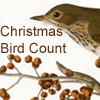
Regional CBC news stories;
Maine (USA): the Lewiston-Auburn count found 49 species on 17 December; Waterville identified 50 species on 18 December; York found 76 species on 19 December.
Augusta, Virginia (USA): 26 people spotted 80 species on 17 December.
Newton, Massachusetts (USA): 17 birders identified 53 species on 18 December.
Solano County, California (USA): an as-yet unknown number of people counted a still-unknown number of species on 19 December.
Mad Island, Matagorda County, Texas (USA): approximately 100 birders identified 249 species on 21 December. Pending verification, this will be a new single-day species record.
Lakeland, Florida (USA): an unreported number of observers saw 134 species on 31 December. More information about all Florida State CBC data is available from the Florida Ornithological Society.
Cayuga, New York (USA): approximately 100 observers counted an as-yet undetermined number of bird species on 1 January.
Holland, Michigan (USA): approximately 12 observers spotted approximately 40 species on 2 January.
Other CBC News
 The purpose of Christmas Bird Counts is to census the populations of birds wintering in the country. But the number of memorable adventures, great times and new friends may actually surpass the number of birds counted. And as birds of a feather flock together, our feathered friends have a magical way of attracting the most interesting sorts of people with their binoculars and field guides.
The purpose of Christmas Bird Counts is to census the populations of birds wintering in the country. But the number of memorable adventures, great times and new friends may actually surpass the number of birds counted. And as birds of a feather flock together, our feathered friends have a magical way of attracting the most interesting sorts of people with their binoculars and field guides.
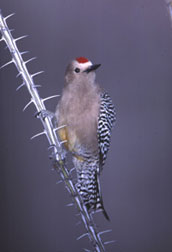 Six months after Arizona's worst desert fire in history had charred 248,310 acres in the "Cave Creek Complex", volunteers will examine the damage to bird populations. "I'm predicting bird numbers will be way down," said Walter Thurber, a compiler for the National Audubon Society's annual Christmas bird count. Jim deVos, head of the research branch of the Arizona Game and Fish Department, said the fire was particularly damaging to mature saguaros in this area. He predicted that pygmy-owls, Glaucidium brasilianum, Gila woodpeckers, Melanerpes uropygialis (pictured), and other birds that depend on saguaros for shelter would likely disappear in wide swaths from Bartlett Lake to New River. Troy Corman, avian biologist for Arizona Game and Fish, said the monsoon summer floods that followed the fires also played havoc with bird populations. He said certain types of wrens, song sparrows and towhees have no bushy slopes to winter in because the vegetation was ripped away by raging waters.
Six months after Arizona's worst desert fire in history had charred 248,310 acres in the "Cave Creek Complex", volunteers will examine the damage to bird populations. "I'm predicting bird numbers will be way down," said Walter Thurber, a compiler for the National Audubon Society's annual Christmas bird count. Jim deVos, head of the research branch of the Arizona Game and Fish Department, said the fire was particularly damaging to mature saguaros in this area. He predicted that pygmy-owls, Glaucidium brasilianum, Gila woodpeckers, Melanerpes uropygialis (pictured), and other birds that depend on saguaros for shelter would likely disappear in wide swaths from Bartlett Lake to New River. Troy Corman, avian biologist for Arizona Game and Fish, said the monsoon summer floods that followed the fires also played havoc with bird populations. He said certain types of wrens, song sparrows and towhees have no bushy slopes to winter in because the vegetation was ripped away by raging waters.
People Helping Birds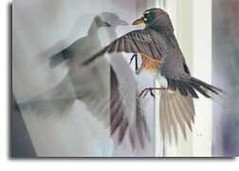
No one knows what birds see when they look out at the world, says ornithologist Daniel Klem, but he's sure they don't see glass. He estimates that at least
1 billion birds are killed by flying into windows every year in the United States. "It's a very common phenomenon," said Klem. "Birds are deceived. They just don't see glass as a barrier and this is a problem for them." Many birds killed by windows get eaten by cats and other scavengers, says Julie Hagelin, an ornithologist at Swarthmore College. But even when there isn't a carcass, it's possible to tell when there's been a collision. Most birds leave a distinctive smudge mark on the window. The challenge was to find a kind of glass that birds could see and people could see through. Everbach and Klem recommended using so-called "fritted" glass. It's etched with closely spaced rows of small circles. When standing right in front of it, the glass is hard to see through, but Everbach says from a slight distance, the dots don't obscure vision that much. If nothing changes, Klem says it's certain that the problem of window hits will escalate. He notes that in the next few decades, millions of new homes and offices will be built in the United States alone.
More information.
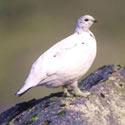
Citizen scientists are being enlisted by the British Trust for Ornithology (BTO) to help search for one of Scotland's most elusive birds, the
Scottish ptarmigan,
Lagopus mutus (pictured in winter plumage). This small, plump bird is typically found in pairs or small groups on the tundra across northern Europe where it relies on cold, mountainous habitats for survival. The ptarmigan is unusual among birds because it changes its plumage pattern three times per year to camouflage it against the changing scenery. The BTO believes global warming has led to a reduction in its range. "Up until now, the wide-scale monitoring of birds in upland areas, particularly the remote mountains of Scotland, has been limited by the low availability of volunteers to carry out survey work," said Jacqui Kaye, of the BTO in Scotland. The first full survey will take place between April and August 2006 and, if enough hillwalkers become involved, the BTO hopes to expand the project to include other upland species.
Except for Ruby-throated Hummingbirds,
Archilochus colubris, the 2005 bird banding season at Hilton Pond Center for Piedmont Natural History in South Carolina wasn't very spectacular. To view the annual summary, banding totals, and wonderful close-up photos of some birds they captured, please visit the this week's installment of
This Week at Hilton Pond. Along with the photo essay and the final week of 2005's banding results, they also include a miscellaneous nature note (scroll down a little on this link).
Bird Flu NewsThe second child who tested positive for
bird flu died early Thursday at Van 100th University Medical Faculty Hospital in eastern Turkey, the semi-official Anatolia news agency reported. With the death of Fatma Kocyigit, 15, the number of people who died from bird flu in Turkey increased to two, said Ahmet Faik Oner, the doctor who was treating the siblings of Kocyigit family. The Kocyigit children helped to raise poultry on a small farm in Dogubayazit town of Agri province in eastern Turkey, and were in close contact with sick birds. The World Health Organization (WHO) on Thursday
sent a team of experts to Turkey to help investigate the deaths, a senior official said. GrrlScientist note:
I received word this morning that a third child in this family, an 11 year old girl, died recently (today?). It is suspected that all three children died from bird flu, although more tests are being conducted to confirm this.U.S. chicken producers including Tyson Foods, Inc., and Pilgrim's Pride, Inc., will begin
testing all their flocks to make sure they are free from hazardous forms of avian influenza (H5 and H7 viruses), after the disease decimated the industry in Asia. Samples will be taken on the farm before the birds are moved to processing plants under a program announced today by the National Chicken Council, a trade group. Tests will be conducted under procedures approved by the National Poultry Improvement Plan, an existing federal-state cooperative program, the Washington, D.C.-based chicken council said in a statement. Flocks found with the H5 or H7 form of bird flu will be humanely destroyed, the council said. The U.S., the world's largest producer and exporter of poultry, is preparing for the possibility that the lethal H5N1 strain of bird flu may reach domestic flocks, threatening an industry valued at $29 billion. The virus, which has never been found in the U.S., led to the destruction of millions of birds in Asia and parts of eastern Europe and resulted in at least 74 human deaths since 2003.

In a trend federal authorities say is "scary", the Internet suddenly is awash with
bogus drugs to counter a possible bird-flu pandemic, including counterfeit Tamiflu. Hundreds of fake Tamiflu pills sold to U.S. consumers by Asian online entrepreneurs have been seized in South San Francisco over the past month, most recently on Wednesday. They are the first such counterfeits detected in this country. The week before, the Food & Drug Administration sent warning letters to nine Internet marketers it accused of peddling other phony remedies. Most were dietary supplements that, among other things, claimed to kill the bird-flu virus or provide "a natural virus shield." How much fraudulent Tamiflu is being sold isn't clear. Roche officials said they are aware of only one instance of counterfeit Tamiflu showing up outside the United States. Those pills, found in Holland, contained only Vitamin C and lactose, and were improperly labeled.
Webbed BirdsThere is a new birding site,
The Birding Site of Malaysia for you to try out. Even though it is still under construction, it has a lot of gorgeous pictures and a bird memory game that you might enjoy. As you work your way through this site, you are invited to email your comments and suggestions to the webmaster (contact information at the bottom of their main page). Be sure to bookmark this site so you can return often.
A new website,
The Wiki Guide to Birds, is currently being developed. Anyone is invited to contribute species information, images, articles, or set up a birding guide to their favorite area. This site is non-commercial and is based on the same free license and wiki software used by
Wikipedia, the online encyclopedia. This site consists of two main areas: regional guides to birding and individual species accounts. A regional birding guide might contain information for the area such as local hotspots, maps, recent sightings, lists of species with links to the species accounts, and just about anything else useful for birdwatching. For an example, see the
guide for the Rio Grande Valley in Texas. A field guide for birds in your chosen region can be created by including the shared species information in your species accounts. Your regional species page can then add local information, such as regional distribution and places to find the species. When the general information, such as field marks or vocalizations, which is shared by all regional field guides, is updated then your species account will automatically be updated with that information. For an example see the
Tamaulipas Crow,
Corvus imparatus, for the Rio Grande Valley and the general
Tamaulipas Crow page. An index is automatically maintained for each region by putting each page in a category. The site is very new so there is plenty of opportunity to contribute and help mold it so it will be useful to the birding community. Feel free to browse or make contributions by editing. The developer, Tim, be more than happy to help others to set up a regional guide for a state, county or other region. Questions, comments or suggestions should be emailed to
Tim.
Streaming Birds
For the
first week of 2006,
BirdNote discusses piracy among raptors; the sounds of dawn around the world; comparing chickadee calls; birdbaths in winter; and today's story, Cuvier's Toucan,
Ramphastos cuvieri, Toucan Sam - the Froot Loops bird. BirdNote programs are two-minute vignettes that incorporate the rich sounds of birds provided by Cornell University and by other sound recordists, with photographs and written stories that illustrate the interesting -- and in some cases, truly amazing -- abilities of birds. Some of the shows are Pacific Northwest-oriented, but many are of general interest. BirdNote can be heard live, Monday through Friday, 8:58-9:00AM in Western Washington state and Southern British Columbia on
KPLU radio and now also in North Central Washington state on
KOHO radio. All episodes are available in the BirdNote archives, both in written transcript and mp3 formats, along with photographs. Listener ideas and comments are
welcomed. [mp3/podcast].
If you don't already love National Public Radio, this series of bird stories should help you rethink your affections.Licensed wildlife rehabilitator and National Public Radio commentator, Julie Zickefoose, raised three orphaned ruby-throated hummingbirds,
Archilochus colubris, a couple of years ago, never expecting to see them again. This
All Things Considered episode tells
the touching story of their return. [3:54, RealPlayer or Windoze Media Player required] For those who are interested to learn more about these particular birds, this is an
earlier story about them. [3:55, RealPlayer or Windoze Media Player required] GrrlScientist says:
sigh! These stories remind me of how much I miss all my baby birds!We've all been in stores and seen birds fluttering around and wondered, how did they get in there? Do they live there 24-7? Licensed wildlife rehabilitator and National Public Radio commentator, Julie Zickefoose, remembers Paul,
a savannah sparrow,
Passerculus sandwichensis, that she met in her local grocery store that became quite popular with the employees there. [3:07, RealPlayer or Windoze Media Player required]
For the past 19 years, ornithologists at Cornell University have solicited help from the general public to count birds from November until April. David Bonter,
Project Feeder Watch coordinator, tells reporter Liane Hansen from National Public Radio's
Weekend Edition how the program works. [2:56, RealPlayer or Windoze Media Player required]
Miscellaneous BirdsEvery year, more people become involved in birdwatching. Fancy equipment, binoculars, expensive scopes, specially designed jackets, pants, hardbound guide books and covers, boots, hats and more line the shelves at the nearest nature stores. All these things are wonderful, but may seem overwhelming to the average person who just wants to learn about the birds around his or her home. These special gadgets and clothing are not necessary; in fact, all you really need is one
bird feeder and one field guide to get started on this exciting hobby that will offer hours of entertainment and joy for the whole family. Additionally, there are numerous web sites featuring free and easily accessible information on birdwatching from your own easy chair. It's so easy to get started birdwatching and it's relatively inexpensive, too, so open up a new world for yourself. GrrlScientist note:
this article also tells you how to get free bird magazines and how to get involved in bird related activities that you might enjoy.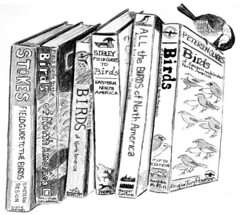
If you are like me, then you enjoy hiking and birding at the same time. If so, then you will be pleased to know that the
North Alabama Birding Trail is now complete. This hiking/birding trail, which stretches across north Alabama from the Mississippi to Georgia borders, passes through 12 sites around the Shoals, Alabama. "We're starting to see quite a few people coming through on the birding trail," said Debbie Wilson, director of Florence-Lauderdale Tourism. "We expect it will really pick up as awareness of the trail increases." It officially opened 30 September. Birders are important tourists: studies have shown bird watchers typically spend more than $150 each day per person for lodging, food, fuel and other purchases while visiting birding sites. Wilson said being able to attract bird watchers to the Shoals during the winter will be a boon for local motels and hotels in what is normally a slow time for travel.
Holiday BirdsA bird pal of mine sent a really cute
holiday card to me and of course, this means I will share it with all of you, too!
The Fine Print: Thanks to my bird pals, Caren, Chris, Dawn, Tim, Victor, Bill, "a good blogging friend" who prefers to remain anonymous, Virasat, Ellen B. and Ron for some of the news story links that you are enjoying here and thanks to Tom Palmer, a reporter for The Ledger
for taking the time to provide more information about the Florida CBCs. Thanks to Ian for catching my amusing mistakes in this issue, thereby preserving my readers' faith in my accuracy. I greatly appreciate James N. for his $upport (and his friendship). Special thanks to long-time readers, Jamie, Tony and anonymous blog reader, for surprising me by nominating Birds in the News
for a 2005 Koufax Award for Best Series! There will be an announcement here, along with more details, when voting begins.Previous : : Birds in the News : : Next
tags: Birds in the News, ornithology, birds, avian, newsletter



Nominated (!!) to the Big Apple Blog Festival
Issue 19.


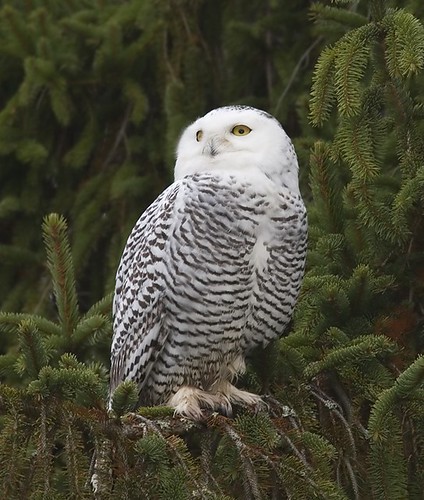
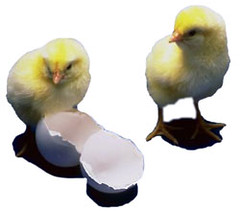
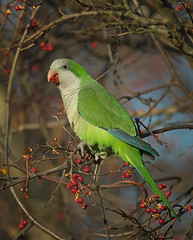
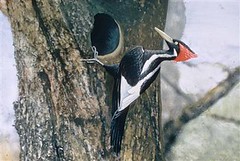 As scientists debate whether the ivory-billed woodpecker, Campephilus principalis (pictured), still exists in the Big Woods of Arkansas, environmentalists have enlisted the bird as a key soldier in their fight against a
As scientists debate whether the ivory-billed woodpecker, Campephilus principalis (pictured), still exists in the Big Woods of Arkansas, environmentalists have enlisted the bird as a key soldier in their fight against a 

 The parents of Toga -- the
The parents of Toga -- the  While the cost of
While the cost of 

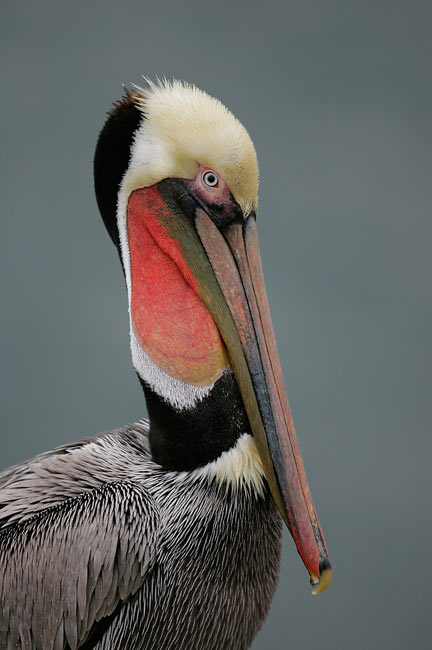
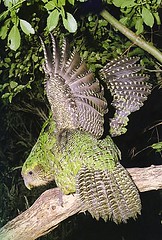 Two University of Canterbury biologists are part of a team whose
Two University of Canterbury biologists are part of a team whose 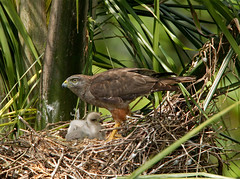 Ridgway's Hawk, Buteo ridgwayi (pictured), is a forest raptor endemic to the New World island of Hispaniola. Once commonly distributed throughout the island, the hawk has been reduced in the last century to a
Ridgway's Hawk, Buteo ridgwayi (pictured), is a forest raptor endemic to the New World island of Hispaniola. Once commonly distributed throughout the island, the hawk has been reduced in the last century to a 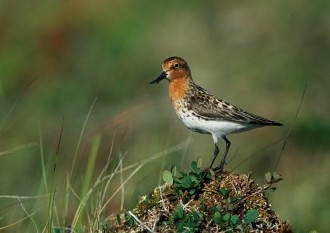
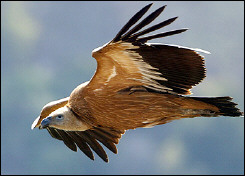

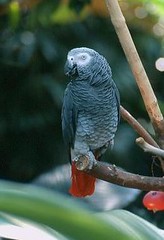 Our second parrot story describes how a gossipy parrot split up a pair of lovebirds when a computer programmer discovered that his girlfriend was having an affair when his
Our second parrot story describes how a gossipy parrot split up a pair of lovebirds when a computer programmer discovered that his girlfriend was having an affair when his 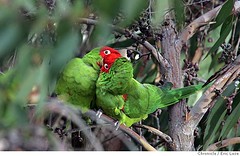 Our third parrot story tells how the movie star parrots (pictured, photo by Eric Luse) from San Francisco's Telegraph Hill just might get a happily-ever-after ending to the
Our third parrot story tells how the movie star parrots (pictured, photo by Eric Luse) from San Francisco's Telegraph Hill just might get a happily-ever-after ending to the 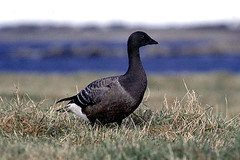

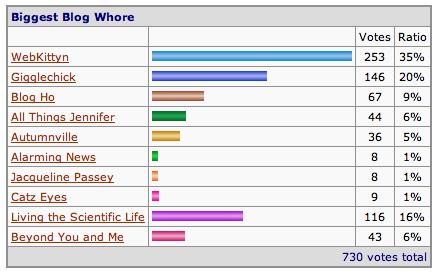
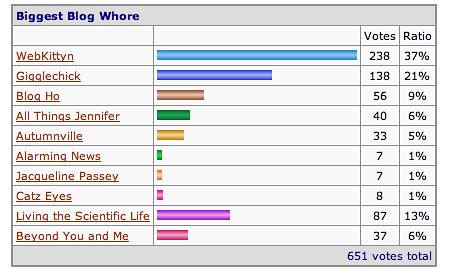
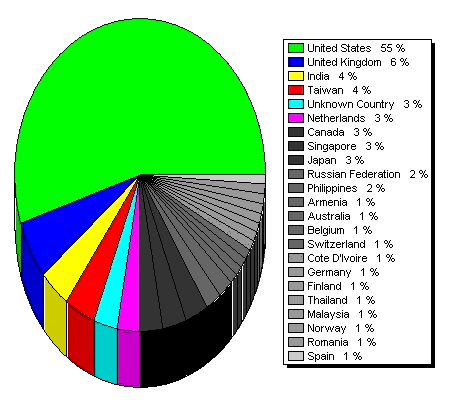


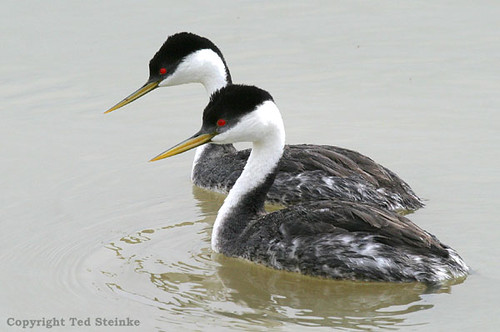
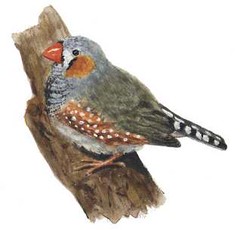 Researchers at Rutgers, The State University of New Jersey, believe they have located a place in the brain where
Researchers at Rutgers, The State University of New Jersey, believe they have located a place in the brain where 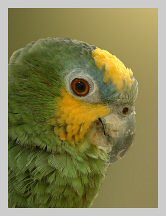 It has long been my opinion that feather picking in birds is a
It has long been my opinion that feather picking in birds is a 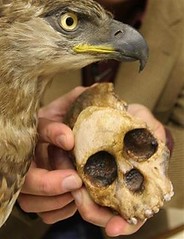 An 80 year old debate about who killed the single most important human ancestor has finally been laid to rest. The announcement that the Taung child (Australopithecus africanus, 2.5 million BP) was
An 80 year old debate about who killed the single most important human ancestor has finally been laid to rest. The announcement that the Taung child (Australopithecus africanus, 2.5 million BP) was 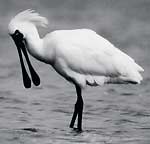 The Endangered
The Endangered 





 The effects of overfishing may have driven marbled murrelets, Brachyramphus marmoratus (pictured, left), an endangered seabird found along the Pacific coast of the United States, to increasingly rely upon
The effects of overfishing may have driven marbled murrelets, Brachyramphus marmoratus (pictured, left), an endangered seabird found along the Pacific coast of the United States, to increasingly rely upon  Every summer for three decades, ornithologist George Divoky, a 59-year-old Seattle resident who works for the University of Alaska's Institute for Arctic Biology, has migrated to Cooper Island, a pile of pebbles in the Arctic Ocean 25 miles from Barrow. The grizzled scientist arrives each June, hauling three months' worth of supplies, to record the lives of birds called black guillemots, Cepphus grylle (pictured), elegant seabirds that nest on the ground under decaying wooden ordnance boxes. Guillemots don't begin nesting until the snow melts and the ground is exposed. The first eggs are laid roughly two weeks later. But one day, Divoky
Every summer for three decades, ornithologist George Divoky, a 59-year-old Seattle resident who works for the University of Alaska's Institute for Arctic Biology, has migrated to Cooper Island, a pile of pebbles in the Arctic Ocean 25 miles from Barrow. The grizzled scientist arrives each June, hauling three months' worth of supplies, to record the lives of birds called black guillemots, Cepphus grylle (pictured), elegant seabirds that nest on the ground under decaying wooden ordnance boxes. Guillemots don't begin nesting until the snow melts and the ground is exposed. The first eggs are laid roughly two weeks later. But one day, Divoky  For birds, getting hauled out of a nest by a scientist and poked with a needle -- an increasingly common occurrence in this season of bird flu -- is very stressful. Some German ornithologists who study terns, gull-like seabirds, worried that such unpleasant encounters were biasing their research results. So taking a cue from nature, they put a
For birds, getting hauled out of a nest by a scientist and poked with a needle -- an increasingly common occurrence in this season of bird flu -- is very stressful. Some German ornithologists who study terns, gull-like seabirds, worried that such unpleasant encounters were biasing their research results. So taking a cue from nature, they put a  The
The 

 The purpose of Christmas Bird Counts is to census the populations of birds wintering in the country. But the number of memorable adventures, great times and
The purpose of Christmas Bird Counts is to census the populations of birds wintering in the country. But the number of memorable adventures, great times and  Six months after Arizona's worst desert fire in history had charred 248,310 acres in the "Cave Creek Complex", volunteers will examine the
Six months after Arizona's worst desert fire in history had charred 248,310 acres in the "Cave Creek Complex", volunteers will examine the  No one knows what birds see when they look out at the world, says ornithologist Daniel Klem, but he's sure they don't see glass. He estimates that at least
No one knows what birds see when they look out at the world, says ornithologist Daniel Klem, but he's sure they don't see glass. He estimates that at least  Citizen scientists are being enlisted by the British Trust for Ornithology (BTO) to help search for one of Scotland's most elusive birds, the
Citizen scientists are being enlisted by the British Trust for Ornithology (BTO) to help search for one of Scotland's most elusive birds, the  In a trend federal authorities say is "scary", the Internet suddenly is awash with
In a trend federal authorities say is "scary", the Internet suddenly is awash with 









